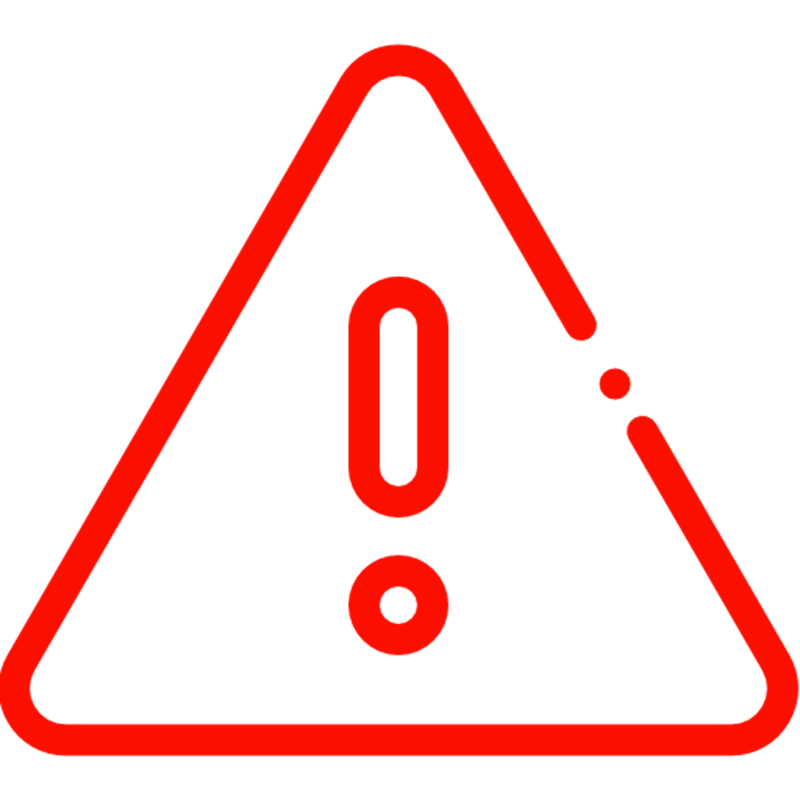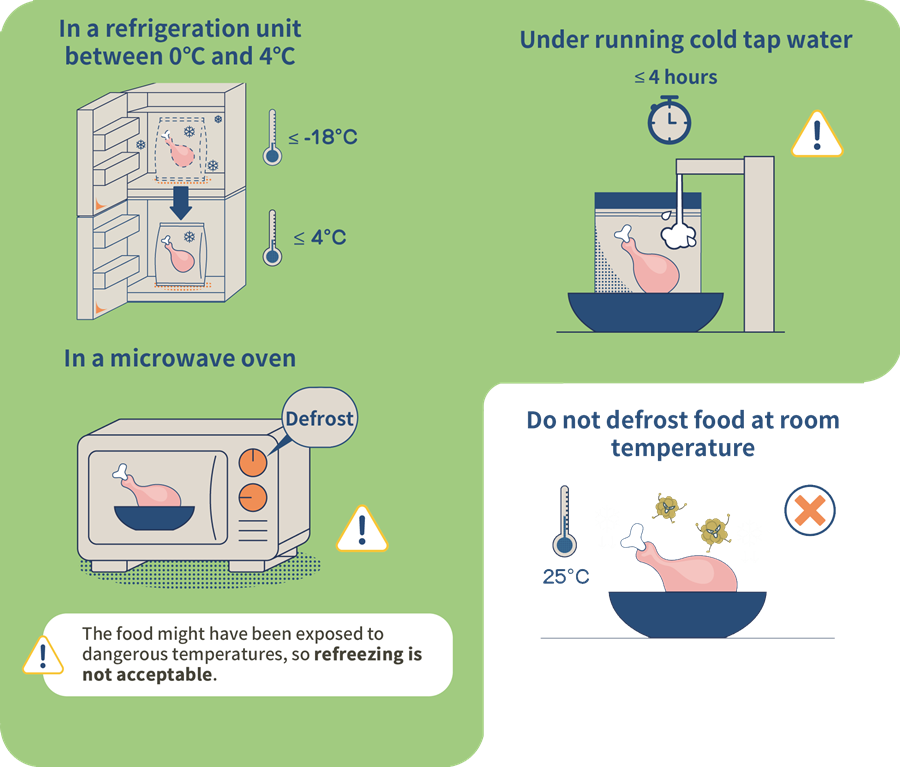Food should be defrosted thoroughly before cooking, otherwise the cooking time will be longer, and the food may be cooked on the outside but raw inside that unable to kill pathogens.
 |
Do not defrost food, especially bulky raw meat and poultry, at room temperature, as this exposes the food to dangerous temperatures for an extended period of time, which can lead to bacterial growth. |
Small-sized food items, such as dumplings, fish cakes, chicken nuggets and frozen vegetables, as well as numerous convenience foods, can be cooked directly from the freezer. Please adhere to the instructions provided on the packaging.
Also, food that appears to be defrosted may still be frozen inside. You can:
- Check with your hand or a fork to see if there are still ice crystals in the food.
- Check if the joints of the poultry turn flexible.
There are three ways to defrost food safely:
In a refrigeration unit between 0°C and 4°C
- Food should be defrosted in dedicated leak-proof containers and should not be in direct contact with the refrigerator compartment.
- Food should be placed in a compartment designated for defrosting.
- The required defrosting time should be estimated beforehand, so that the food can be placed in the refrigerator in a timely manner.
- Always defrost frozen food to be consumed raw (or without further cooking) in a refrigerator.
 |
Refreezing is possible if the food is properly defrosted in the refrigerator consistently kept at 4°C or below |
In a microwave oven
- Place food in a clean container and defrost it in a microwave oven on the 'defrost' setting.
- This is a fast and convenient method best suited for food of small size.
- After defrosting, subsequent cooking or processing should follow instantly.
 |
The food might have been exposed to dangerous temperatures, so refreezing is not acceptable |
Under running cold tap water
-
Food to be defrosted (raw meat and poultry in particular) should be packed in a sealed container to avoid contamination of food and the surrounding areas.
-
Running tap water should be kept at 25°C or below, otherwise ice cubes could be added for cooling.
-
The defrosting process must be completed within 4 hours, and any further cooking or processing steps must begin immediately.
-
To avoid cross-contamination, foods for raw consumption or ready-to-eat foods should not be defrosted under running tap water.
-
Thoroughly clean the kitchen sink and surrounding areas after defrosting.
 |
The food might have been exposed to dangerous temperatures, so refreezing is not acceptable |

While both the microwave and running tap water are generally safe ways to defrost frozen food, they are more likely to expose frozen food to be consumed raw (or without further cooking) to the Temperature Danger Zone for some time or create hot spots* that promote bacterial growth. Therefore, using these methods for defrosting frozen food to be consumed raw (or without further cooking) is not recommended.
*hot spots: areas with uneven temperature distribution in food